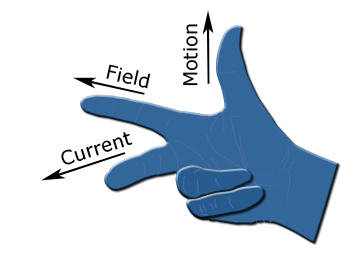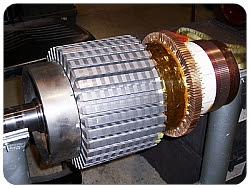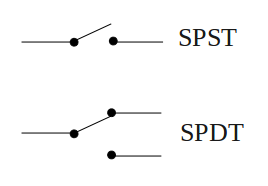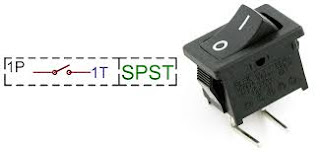Explain relay
Relay
A relay is an electrically operated switch. Many relays use
an electromagnet to mechanically operate a switch, but other operating
principles are also used, such as solid-state relays. Relays are used where it
is necessary to control a circuit by a low-power signal (with complete
electrical isolation between control and controlled circuits), or where several
circuits must be controlled by one signal. The first relays were used in long
distance telegraph circuits as amplifiers: they repeated the signal coming in
from one circuit and re-transmitted it on another circuit. Relays were used
extensively in telephone exchanges and early computers to perform logical
operations.
A type of relay that can handle the high power required to
directly control an electric motor or other loads is called a contactor.
Solid-state relays control power circuits with no moving parts, instead using a
semiconductor device to perform switching. Relays with calibrated operating
characteristics and sometimes multiple operating coils are used to protect
electrical circuits from overload or faults; in modern electric power systems
these functions are performed by digital instruments still called
"protective relays".
Magnetic latching relays require one pulse of coil power to
move their contacts in one direction, and another, redirected pulse to move
them back. Repeated pulses from the same input have no effect. Magnetic
latching relays are useful in applications where interrupted power should not
be able to transition the contacts.
Magnetic latching relays can have either single or dual
coils. On a single coil device, the relay will operate in one direction when
power is applied with one polarity, and will reset when the polarity is
reversed. On a dual coil device, when polarized voltage is applied to the reset
coil the contacts will transition. AC controlled magnetic latch relays have
single coils that employ steering diodes to differentiate between operate and
reset commands.
Symbol .
Basic design and operation
A simple electromagnetic
relay consists of a coil of wire wrapped around a soft iron core, an iron yoke
which provides a low reluctance path for magnetic flux, a movable iron
armature, and one or more sets of contacts (there are two[clarification needed
: sets or contacts?] in the relay pictured). The armature is hinged to the yoke
and mechanically linked to one or more sets of moving contacts. It is held in
place by a spring so that when the relay is de-energized there is an air gap in
the magnetic circuit. In this condition, one of the two sets of contacts in the
relay pictured is closed, and the other set is open. Other relays may have more
or fewer sets of contacts depending on their function. The relay in the picture
also has a wire connecting the armature to the yoke. This ensures continuity of
the circuit between the moving contacts on the armature, and the circuit track
on the printed circuit board (PCB) via the yoke, which is soldered to the PCB.
When an electric current is passed through the coil it
generates a magnetic field that activates the armature, and the consequent
movement of the movable contact(s) either makes or breaks (depending upon
construction) a connection with a fixed contact. If the set of contacts was
closed when the relay was de-energized, then the movement opens the contacts
and breaks the connection, and vice versa if the contacts were open. When the
current to the coil is switched off, the armature is returned by a force,
approximately half as strong as the magnetic force, to its relaxed position.
Usually this force is provided by a spring, but gravity is also used commonly
in industrial motor starters. Most relays are manufactured to operate quickly.
In a low-voltage application this reduces noise; in a high voltage or current
application it reduces arcing.
When the coil is energized with direct current, a diode is
often placed across the coil to dissipate the energy from the collapsing
magnetic field at deactivation, which would otherwise generate a voltage spike
dangerous to semiconductor circuit components. Such diodes were not widely used
before the application of transistors as relay drivers, but soon became
ubiquitous as early germanium transistors were easily destroyed by this surge.
Some automotive relays include a diode inside the relay case.
If the relay is driving a large, or especially a reactive
load, there may be a similar problem of surge currents around the relay output
contacts. In this case a snubber circuit (a capacitor and resistor in series)
across the contacts may absorb the surge. Suitably rated capacitors and the
associated resistor are sold as a single packaged component for this
commonplace use.
If the coil is designed to be energized with alternating
current (AC), some method is used to split the flux into two out-of-phase
components which add together, increasing the minimum pull on the armature
during the AC cycle. Typically this is done with a small copper "shading
ring" crimped around a portion of the core that creates the delayed,
out-of-phase component,[9] which holds the contacts during the zero crossings
of the control voltage.





















